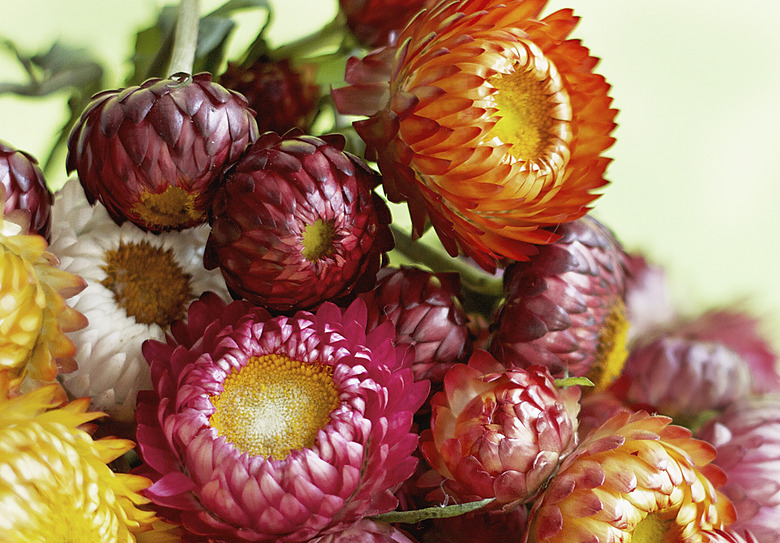How To Clean Dried Flowers
Things Needed
- Hair dryer
- Vacuum cleaner
- Foam brushes
- Artist's brushes
- Cleaning swabs
- Table salt
Tip
A vacuum cleaner with reverse flow can be used for blowing dried plants clean, too. This is a great method if your vacuum has this feature. Specialty miniature vacuum cleaners designed to detail computers have a number of helpful, small attachments that are useful in cleaning dried and silk plants as well.
Warning
Work on dry days. In high humidity, dust clings to dried plants, making it harder to remove.
Dried and silk flowers add beauty to a room but are terrible dust catchers. One of the disadvantages to using them in decorating is coming up with an effective and easy method of cleaning them. Many people just toss dried flowers after a few months, not even attempting to rehabilitate them. But they can be expensive, so following a few unorthodox cleaning procedures can help extend their useful life.
Step 1
Maintain a cleaning schedule for dried or silk flowers. One of the keys to ongoing success when cleaning dried flowers is not letting too much dust build up on them. This is doubly true in areas that may be subject to greasy dust, like in kitchens and dining rooms.
Step 2
Treat flat, broad leaf plants with a hair dryer set on low heat. The gentle airflow will remove surface dust quickly.
Step 3
Work in a well-ventilated area. Working outside will keep dust from settling back on your furniture and other dried plants.
Step 4
Dip more complex leaf and flower structures in a bag filled with table salt. Place a 1/2-cup of salt in a paper bag and then add the plants one at a time. Cover with another 1/2-cup of salt and shake lightly. The salt "scrubs" the dust from the leaves. This is effective with plants that have dense or tight groups of leaves, like eucalyptus. Brush away any clinging salt dust or grains with a sponge brush or cotton swab.
Step 5
Attack stubborn spots with a blast of canned air designed to clean computer keyboards.
Step 6
Detail leaves and flowers that don't respond to other methods. For this method it's a good idea to keep a small toolkit containing cotton swabs, a 1-inch sponge brush, pipe cleaners and an assortment of inexpensive artists brushes. Use this step last. That way the other steps outlined above will have removed most of the surface dust. Start with the inside of the flower or leaf cluster and work outward. The design of the flower or leaves will determine the best tool for you to use. Work slowly from the top down. That way you will avoid loosening dust only to have it settle on the lower leaves of the dried sprig.
